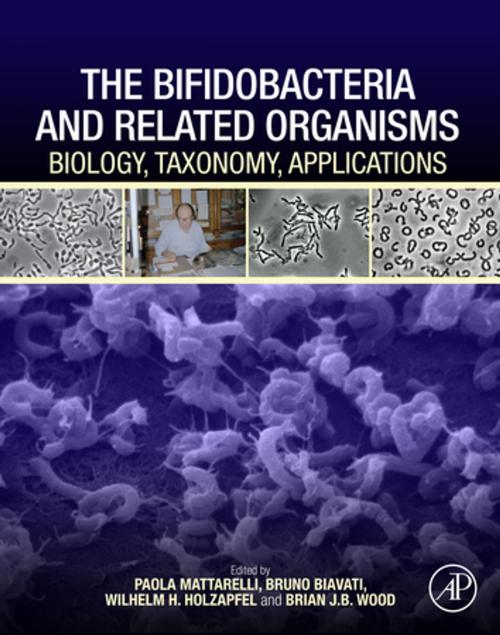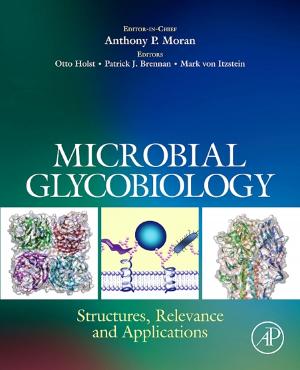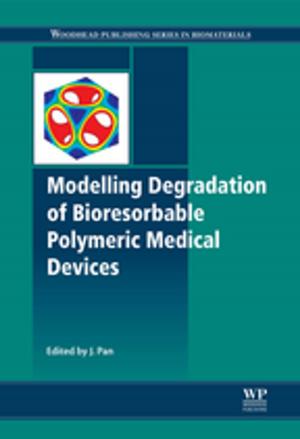The Bifidobacteria and Related Organisms
Biology, Taxonomy, Applications
Nonfiction, Science & Nature, Technology, Food Industry & Science| Author: | ISBN: | 9780128052099 | |
| Publisher: | Elsevier Science | Publication: | September 20, 2017 |
| Imprint: | Academic Press | Language: | English |
| Author: | |
| ISBN: | 9780128052099 |
| Publisher: | Elsevier Science |
| Publication: | September 20, 2017 |
| Imprint: | Academic Press |
| Language: | English |
The Bifidobacteria and Related Organisms: Biology, Taxonomy, Applications brings together authoritative reviews on all aspects of Bifidobacteria and related genera. Their place within the Phylum Actinobacteria is discussed first, and this is followed by descriptions of the genera Bifidobacterium, Alloscardovia, Aeriscardovia, Bombiscardovia, Gardnerella, Metascardovia, Parascardovia and Scardovia and the currently accredited species within those genera.
The increased availability of genome sequences and molecular tools for studying bifidobacteria provides important information about their taxonomy, physiology and interactions with their host. Also considerations about common bifidobacterial core maintenance during the mutual coevolution of a host and its intestinal microbes could be relevant for health claims for the ability of symbiotic gut bacteria to provide health benefits to their host, and for evaluating such claims in scientifically valid experiments.
Chemotaxonomy is important to our understanding of these genera and so is considered along with physiological and biochemical aspects before proceeding to examine clinical and other practical aspects. The ability to maintain pure cultures and to grow cells in industrial quantities when required for applications requires that the cells’ environmental and nutritional needs are well understood. Some species are important clinically and as animal digestive tract synbionts—and even play a part in honey production—so these matters are considered along with milk oligosaccharides’ roles in gut flora development in neonates.
- Presents information on all bacteria in this group in one place
- Provides applications and technological considerations placed alongside more academic matters such as nomenclature and phylogeny
- Includes basic information on the beneficial role of bifidobacteria in the human gut, with particular importance for infants
- Provides information on genomic and gene modification technologies
The Bifidobacteria and Related Organisms: Biology, Taxonomy, Applications brings together authoritative reviews on all aspects of Bifidobacteria and related genera. Their place within the Phylum Actinobacteria is discussed first, and this is followed by descriptions of the genera Bifidobacterium, Alloscardovia, Aeriscardovia, Bombiscardovia, Gardnerella, Metascardovia, Parascardovia and Scardovia and the currently accredited species within those genera.
The increased availability of genome sequences and molecular tools for studying bifidobacteria provides important information about their taxonomy, physiology and interactions with their host. Also considerations about common bifidobacterial core maintenance during the mutual coevolution of a host and its intestinal microbes could be relevant for health claims for the ability of symbiotic gut bacteria to provide health benefits to their host, and for evaluating such claims in scientifically valid experiments.
Chemotaxonomy is important to our understanding of these genera and so is considered along with physiological and biochemical aspects before proceeding to examine clinical and other practical aspects. The ability to maintain pure cultures and to grow cells in industrial quantities when required for applications requires that the cells’ environmental and nutritional needs are well understood. Some species are important clinically and as animal digestive tract synbionts—and even play a part in honey production—so these matters are considered along with milk oligosaccharides’ roles in gut flora development in neonates.
- Presents information on all bacteria in this group in one place
- Provides applications and technological considerations placed alongside more academic matters such as nomenclature and phylogeny
- Includes basic information on the beneficial role of bifidobacteria in the human gut, with particular importance for infants
- Provides information on genomic and gene modification technologies















